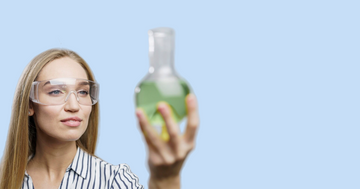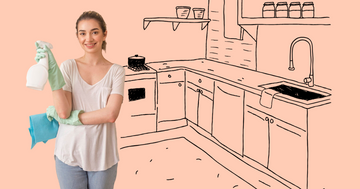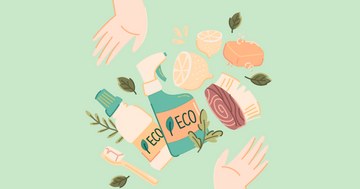In today’s eco-conscious world, the debate between plant-based and chemical cleaning products has taken center stage. As more consumers seek non-toxic, sustainable solutions for their homes, brands like Gleamsure are leading the charge with plant-derived formulas that promise safety, effectiveness, and environmental responsibility.
But are plant-based cleaners truly as effective as traditional chemical ones? And what does the science actually say about their performance, health impact, and eco-footprint?
In this blog, we’ll explore the differences between the two, supported by research and practical insights, so you can make informed choices for a cleaner and healthier home.
What Are Plant-Based Cleaners?
Plant-based cleaners use ingredients derived from renewable sources like coconut, corn, citrus, and essential oils. These ingredients are typically biodegradable, non-toxic, and free from harsh synthetic chemicals such as chlorine bleach, ammonia, phthalates, and parabens.
Common Ingredients in Plant-Based Cleaners:
Citric acid (from citrus fruits)
Lactic acid (natural disinfectant)
Baking soda (deodorizing agent)
Vinegar (natural degreaser)
Essential oils (antimicrobial properties)
Coconut-based surfactants
What Are Chemical Cleaners?
Chemical cleaners often rely on synthetic compounds designed for maximum effectiveness. These include disinfectants, degreasers, and surfactants that can eliminate bacteria, break down oils, and remove stains.
Typical Ingredients in Chemical Cleaners:
Sodium hypochlorite (bleach)
Ammonia
Formaldehyde
Phosphates
Synthetic fragrances
While many of these are effective, they may come with health risks and environmental concerns if misused or overused.
Health Impact: What the Research Says
Chemical Cleaners and Health Risks
According to a 20-year study published in the American Journal of Respiratory and Critical Care Medicine, regular use of chemical cleaning products is linked to a decline in lung function equivalent to smoking 20 cigarettes a day.
Other risks include:
Skin irritation
Eye and respiratory tract issues
Hormonal disruptions from endocrine-disrupting compounds
Allergic reactions from synthetic fragrances
Children and pets are particularly vulnerable, given their lower body weight and frequent contact with floors and surfaces.
Plant-Based Cleaners and Safety
Plant-based cleaners are generally considered safer. Most lack volatile organic compounds (VOCs), which contribute to indoor air pollution.
Benefits include:
Reduced allergic reactions
Gentle on sensitive skin
Safer for homes with babies, children, and pets
However, it’s essential to check labels, as not all “green” products are genuinely non-toxic—some may still contain preservatives or artificial scents.
Environmental Impact
Chemical Cleaners:
Contribute to water pollution when washed down the drain
Non-biodegradable ingredients persist in the ecosystem
Harmful to aquatic life
Often packaged in non-recyclable plastic
Plant-Based Cleaners:
Made with biodegradable ingredients
Often produced using sustainable farming practices
Less harmful to marine ecosystems
Typically use recyclable or refillable packaging
A study from the Environmental Working Group (EWG) found that many mainstream cleaners score poorly on environmental safety due to harmful surfactants and non-biodegradable agents.
Effectiveness: Can Plant-Based Cleaners Compete?
There’s a common misconception that “natural” means “weaker.” However, studies suggest that many plant-based formulas are just as effective in regular home cleaning tasks.
Science-backed findings:
Citric acid and lactic acid are proven antimicrobial agents against bacteria like E. coli and Salmonella.
Coconut-derived surfactants perform comparably to synthetic ones in degreasing and foam production.
Baking soda and vinegar are effective in deodorizing and mild stain removal.
However, when it comes to hospital-grade disinfection or industrial sanitation, chemical disinfectants like bleach still outperform.
For household cleaning, especially in kitchens, bathrooms, and living spaces, plant-based cleaners are often sufficient.
Real-Life Performance: What Consumers Say
User feedback shows growing satisfaction with plant-based options:
Many report fewer allergies and headaches
Improved indoor air quality
Satisfaction with grease and grime removal on par with chemical alternatives
Gleamsure, for instance, offers dishwash liquids and toilet cleaners that combine citrus power and coconut-based surfactants for strong performance without toxins.
Certification and Transparency
To ensure you're choosing a truly safe and effective cleaner, look for:
EcoCert
USDA Organic
EWG Verified
Leaping Bunny Certified (Cruelty-Free)
Brands that are transparent about ingredient sourcing and testing are more likely to provide genuinely safe and effective products.
Cost Comparison
Some people assume plant-based products are more expensive—but that gap is narrowing.
Long-term benefits of plant-based products:
Fewer doctor visits due to fewer allergic reactions
Better shelf life with concentrates or refills
Cost savings from multi-purpose usage (e.g., all-purpose spray instead of multiple cleaners)
Gleamsure, for example, offers refill packs that are both budget- and eco-conscious.
Making the Switch: Tips for Transitioning
Start Small: Replace your dish soap or surface spray first
Read Labels: Avoid greenwashing—check for non-toxic, biodegradable claims
Try DIY: Use baking soda, vinegar, and lemon for basic cleaning
Invest in Quality: Choose trusted brands that deliver both safety and performance
Go Refillable: Reduce plastic by opting for refill packs and concentrates
Conclusion: Which One Wins?
For everyday home cleaning, plant-based cleaners win on health, safety, and sustainability.
While chemical cleaners may have their place in hospitals or heavy-duty scenarios, they come with significant health and environmental trade-offs. Backed by science, plant-based products offer a safer alternative that doesn’t compromise on cleanliness.
By choosing eco-friendly options, you're not only protecting your home but also contributing to a cleaner planet.






